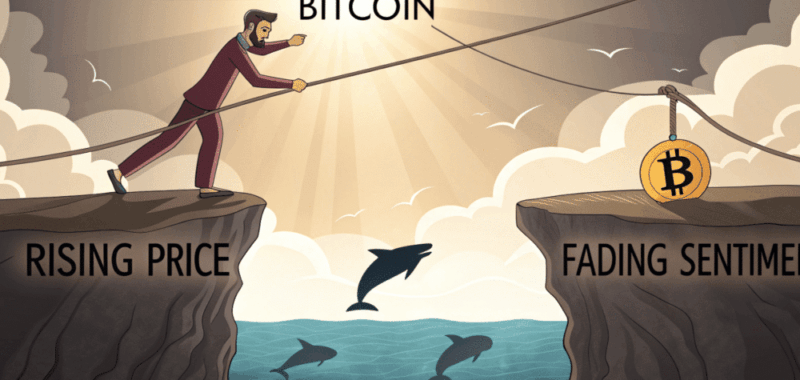- Long-Term Holder NUPL stayed flat at 0.69 despite Bitcoin rallying from $85K to over $103K, reflecting muted conviction.
- Stock-to-Flow Ratio surged 116.67% post-halving to 43.5K, deepening Bitcoin’s scarcity narrative.
Bitcoin’s [BTC] long-term holder NUPL has returned to 0.69—identical to the 1st of April levels—despite BTC rising from $85K to $102K during that time.
In other words, despite the price surge, long-term investor sentiment hasn’t budged. Naturally, this reflects more than just hesitation.
December 2024 buyers are maturing into long-term holders, which dilutes the overall unrealized profit share. At the time of writing, BTC traded at $103,842, up 1.74% in the past 24 hours.
Despite this bullish move, sentiment among long-term holders remains subdued. This disconnect highlights a growing divergence between price action and investor confidence over recent weeks.
Are whales unloading too soon?
Whales have sold over 30,000 BTC in the last 72 hours, aggressively trimming their positions.
Simultaneously, Large Holders Netflow fell off a cliff, dropping 176.22% over seven days, and 71.25% over 30 days, per IntoTheBlock.
This data reveals a pattern of distribution rather than accumulation. Therefore, whales appear to lack confidence in the short-term upside.
Their consistent exits from the market suggest that caution is setting in.

Source: IntoTheBlock
If large holders continue reducing exposure, short-term momentum could weaken despite Bitcoin’s higher valuation.
Nearly all Bitcoin holders are in profit.
Over 94.88% of addresses hold BTC above their cost basis. Only 0.88% remain out of the money. While this reflects strong profitability, it also introduces distribution risk.
Historically, such extremes have often preceded periods of correction.
Therefore, the chance of broader sell pressure remains elevated. If holders rush to lock in profits, they could increase supply on the market.
Is rising derivatives activity masking weak conviction?
Bitcoin derivatives markets show higher activity but lower conviction. Futures Volume rose 36%, while Options Volume climbed 45%. But look deeper.
Meanwhile, Futures Open Interest rose only 1.5%, and Options Open Interest actually dropped 5%.
The takeaway?
It highlights speculative trading without strong long positioning. Traders remain cautious despite active engagement.
Therefore, current momentum lacks the deep leverage commitment seen during major rallies. Stablecoin buying power is growing.
The Exchange Stablecoin Ratio rose 4.49% to 0.00005, indicating increased reserves. This suggests that capital is sitting on the sidelines, waiting for a better entry.
However, it has not yet entered Bitcoin markets. Therefore, the buildup remains potential, not realized. If Bitcoin dips, stablecoins could flood in to support price.
But without that trigger, the demand remains inactive.


Source: CryptoQuant
Is BTC’s long-term scarcity narrative growing stronger?
Zooming out, Bitcoin’s Stock-to-Flow Ratio jumped 116.67% to 43.5K, highlighting the deepening impact of the halving-induced supply shock.
If demand returns with strength, this reduced supply could amplify price action quickly. However, without new inflows, this bullish structure remains underutilized.
Investors should track this metric closely as it reflects Bitcoin’s intrinsic long-term value.


Source: CryptoQuant
Bitcoin shows strength in price but weakness in conviction. Long-term holders are muted, and whales are selling. Derivatives metrics reflect uncertainty.
Stablecoins signal readiness, but not deployment. Only scarcity supports the long-term case.
Therefore, the rally’s sustainability depends on renewed demand absorbing selling pressure and validating current price levels.

